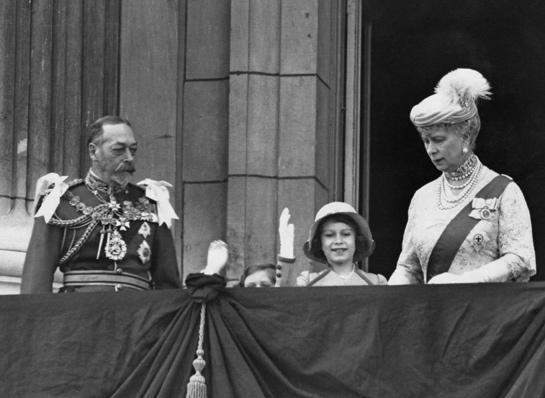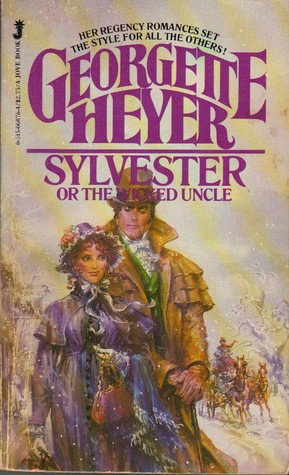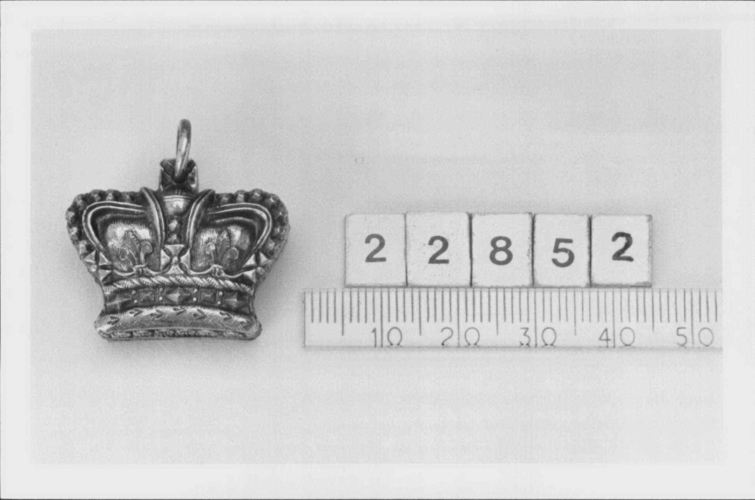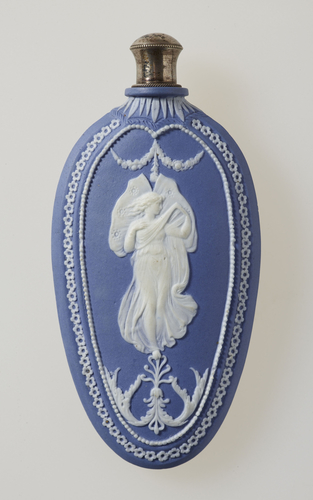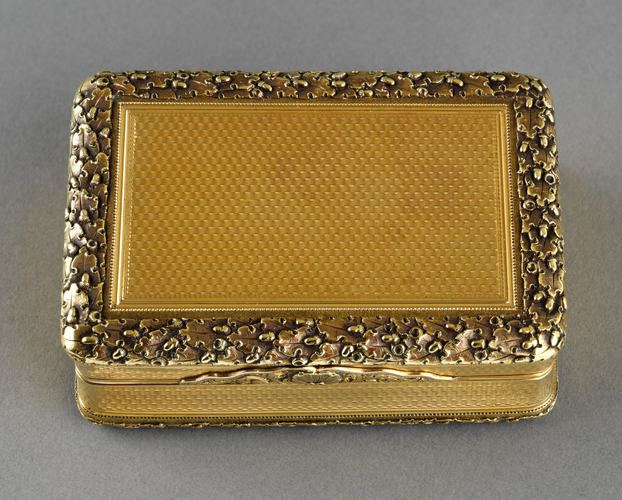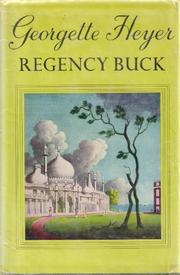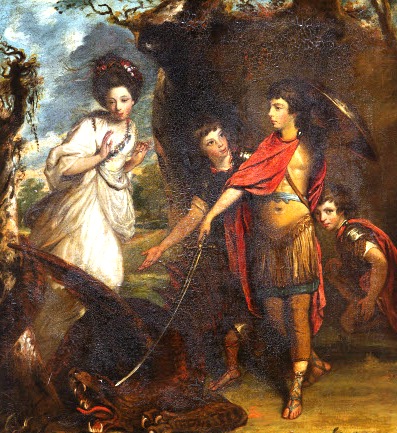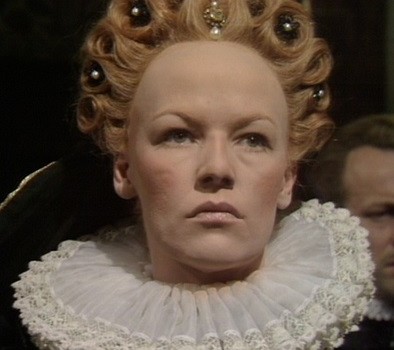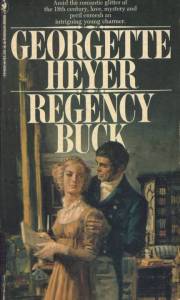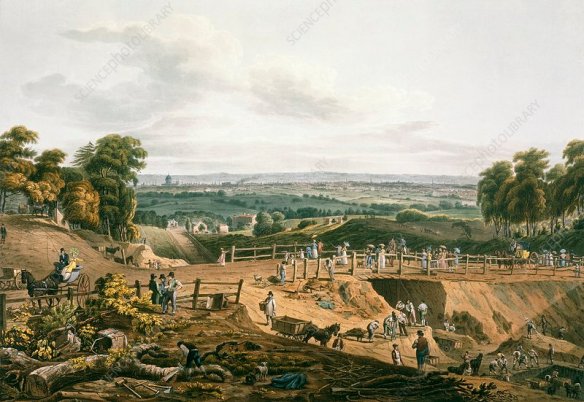This is the final installment of a series examining the personality of Sarah Sophia Villiers, Countess of Jersey. For two centuries she has played a role in late Georgian-themed literature–a remarkable testament to her character’s powerful influence. Writers rely upon her time and again to establish a challenging setting for their plots because she is the symbol of an immovable, rigid society of unbending rules and top-of-the-trees elites.
To repeat: Sarah Sophia was–and still is–the Standard-Bearer to the Regency.

“The devil himself was not more handsome or seductive than this man who called himself Glenarvon. From the moment she met him, Calantha knew she was damned..” –from the back cover
As described in a previous post, Sarah Sophia makes her most significant appearance in the first of many works: Glenarvon (1816). Among the members of the Regency ton, there were plenty of society figures who possessed a penchant for talking excessively and interrupting ongoing conversations, or an obsession with secrets and frenetic socializing. As Lady Holland wrote to Mrs. Creevey1, the libel lay in the way such traits were so cleverly packaged. Future authors would emulate this unique method of characterization.

Lord Worth chides her: “Don’t talk, Sally, you interrupt Miss Crewe.”
Like the intrepid fox-hunting Corinthian in a Heyer romance, Caro showed us all the way.
Sarah Sophia, in the guise of Lady Augusta, deplores Glenarvon’s cruel seduction and expresses sympathy for Calantha, “dying alone, upbraided, despised and deserted.” She recognizes injustice done to another woman but does nothing about it.
It is a virulent portrait of an unfeeling creature, very like contemporary diarist Charles Greville’s2 description of Sarah Sophia–devoid of feminine softness.
“I am like a deer, and ever fly with the herd; there is no excuse..ever, for those who are wounded and bleeding and trodden upon.” — Lady Augusta Selwyn, Glenarvon
When Sarah Sophia was about sixty years of age, she made another appearance in literature, this time as Lady St Julians in Benjamin Disraeli’s Coningsby and Sybil. Both works reflect the author’s dissatisfaction with established political parties, where members exist only to serve their own interests and not the people they represent.
Lady St. Julians is a creature of the system, ignoring the principle of the thing in favor of her family’s interests, constantly maintaining a network to promote them:
“..she made it a rule to go everywhere and visit everybody, provided they had power, wealth and fashion…” — Coningsby (1844)
Her efforts to influence Conservative politics reflect Sarah Sophia’s, and not in a complimentary way:
“…driving distractedly about town, calling at clubs, closeted with red tapers*, making ingenuous combinations that would not work, by means of which some of her sons was to stand in coalition with some great parvenu, to pay none of the expenses, and yet come in first.” — Sybil (1845)

” ‘Oh, goodness me! Don’t, I implore you, give her vouchers for Almack’s. ..she presents such a very off-appearance, doesn’t she? ..she looks stupid. I’m persuaded she’s not awake upon any suit!’ “
Thirteen years after her death, Disraeli gave Sarah Sophia immortality as Zenobia in his Endymion (1880). For all his fascination for her, his published correspondence rarely mentions Lady Jersey, apart from seeing her ablaze with jewels at Queen Victoria’s coronation, and observing her husband’s (bless him) flood of tears when their eldest son married Prime Minister Peel’s daughter.3
Some have said Zenobia is a composite portrait of Disraeli’s Whig patronesses.4 This is unlikely given his masterful rendition of Lady Jersey’s political efforts–they are hers almost to the life. When Endymion’s Whigs are in the ascendant, Zenobia gnashes her teeth. And when the Whig government resigns, Zenobia triumphs.
Sarah Sophia’s every idiosyncrasy is recalled with exactitude:
“..to listen, among her many talents, was also her rarest…she liked flattery, and always said she did..she liked handsome people, and even handsome women, and persons who were dressed beautifully.. she never liked her male friends to marry..and it was her habit to impress upon her noble fellows of both sexes that there were relations of intimacy between herself and the royal houses of Europe, which were not shared by her class.” — Endymion (1880)
Georgette Heyer resurrected Sarah Sophia to become a powerful utility character in many a Regency romance novel. As Caro did in Glenarvon, Heyer makes Lady Jersey a source of external conflict (society’s strictures) for intrepid heroines to overcome. She is also a tool manipulated by Heyer’s heroes, frequently men she adores, to steer other characters into position for season after season of excellent plot maneuvers.

“Hero would have been astonished, and indeed indignant, had she been aware that she was the object of Lady Jersey’s sympathy.”
Beloved Cotillion mentions the queen of society only in passing, but a chance remark Sarah Sophia makes ‘off-camera’ is telling, putting a very special hero to the blush. Freddy’s sister Meg may proclaim him the best dancer in all London, but for Lady Jersey to add her tribute warrants an exquisite “By Jove!” from him.
In Arabella, Lady Jersey fans the flames of internal conflict. “Vivacious, restless and scintillating,” Sarah Sophia enjoys the hero’s company, rousing jealousy in the breast of a heroine who has just rejected the hero’s marriage proposal out of hand.
One last observation of her character, before we leave her, comes from Henry Edward Fox, son of the aforementioned Lady Holland, appearing in a previous installment of this series. Of all the writers who have described Sarah Sophia, whether in fact or fiction, he is the most eloquent. He gives us the real woman, with all her faults, by the very reason he deeply admired her:
Dined tête-à-tête with Lady Jersey, whose wonderful garrulity does not bore me. I have such an affection for her and feel such perfect confidence in her sincerity that I like what many people cannot endure.” June 30, 1823
—The Journal of Henry Edward Fox 1818 – 1830

“Lady Buxted remembered impertinent little Sally Fane, a wretched schoolroom miss to whom she had administered a number of well-deserved setdowns..”
*red Toryism – conservative with a small (c)
1 The Creevey Papers Vol I by Thomas Creevey (1904) Sarah Sophia’s Whig rival uses the term amplisagge to describe Caro’s clever rendering.
2 The Greville Memoirs, Charles C.F. Greville, Esq (1875)
3 Lord Beaconsfield’s correspondence with his sister, 1832-1852 by Benjamin Disraeli (1804-1881); edited by Ralph Disraeli
4“Endymion, A Review,” Tullidge’s Quarterly, by Edward Tullidge, editor (1881). Tullidge was a Mormon who emigrated from England to Utah. He wrote extensively on a variety of topics and ran several magazines. Known as the Mormon feminist historian, it is ironic that his widow was said to have died penniless from his bankruptcy, her body found on the cold ground with scarcely a blanket to cover her.
